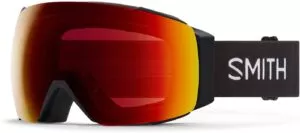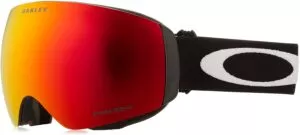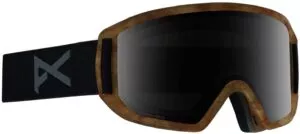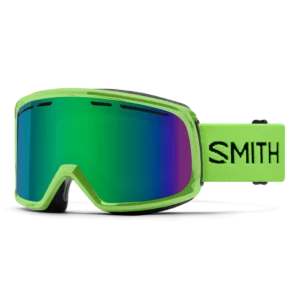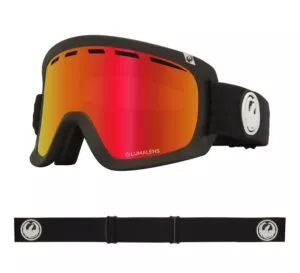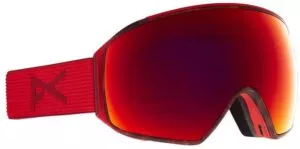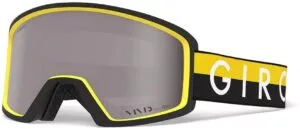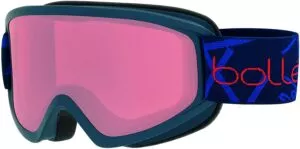
The Best Ski Goggles in Canada
Snow goggles have always been my favourite piece of ski equipment – not only is it impossible to not look good in a solid fitting Helmet/Goggle configuration, but the way the tint of my childhood Smith’s illuminated the mountain always made everything look brighter. While ski goggles are not a necessity of the hill, once you get a good pair yourself, you will never go back. Keeping your face warm and improving the visibility on the mountain are just some of the advantages of donning a pair of ski goggles on the hill.
There is quite a range of ski goggles available, at quite the range of prices. If you are looking for ski goggles, there are a lot of factors that can make or break a pair of goggles. We decided to make this buying guide so whether you are a first-timer or the king/queen of the ski hill, you can find the right Ski goggle for you.
READ MORE: The Best Ski Socks in Canada
Our top picks
How to choose ski goggles
There are many factors that set different ski goggles apart. While some of these may be ubiquitous for all skiers, there are factors that will be impacted by where you ski, when you ski, and how. Someone who skis or snowboards in the backcountry or skis in any condition will need a much more effective goggle than someone who skis only a few times per year.
- Cost: Ski goggles can be expensive. We have provided goggles from bargain prices to premium, top-of-the-line prices, so you can buy the best goggle for your money.
- Field of View: Field of view means how much of your vision will be available or obstructed by the goggle. Ideally, you want a goggle that restricts your peripheral vision minimally, so you can always be aware of what is around you. Field of vision also refers downwards, meaning this might be one of your biggest criteria if you need to be aware of the powder in front of yourself like mogul skiers do.
- Fit: For the most part, ski goggles are unisex, so we disregarded that in our discussion. Instead, ski goggles may come in different sizes, or come in a “one-size-fits-all” size. Size is perhaps most important when shopping for a pair of goggles that will fit with your helmet or vice versa. However today, most goggles will work with most helmets. If you want to be sure, opt for a helmet and goggles from the same manufacturer, as they should fit together perfectly.
- Fogging: If you buy a pair of ski goggles to help improve your visibility on the mountain, yet they fog up in use, your money might be wasted. After all, fog is one of the biggest reducers of visibility in a ski mask. Look for goggles that provide a tight fit, feature ventilation or anti-fog treatment on the lenses, and be careful about your goggles getting wet, as wet goggles will fog way more often than a dry pair.
- Interchangeability: If you ski or snowboard a lot in different conditions, you may want to consider a pair of goggles with good interchangeability so you can switch between different lenses that work better in different lighting levels. Most goggles are designed to work in mid to high light conditions, so buying a goggle with a low-light lens included might make sense for some skiers.
- Visible Light Transmission: Or VLT for short, means the amount of light that is allowed to pass through a lens. Goggles are supposed to improve visual clarity in rough conditions you may find on the ski hill – both blinding sunbeams and blistering winds being real possibilities. So ideally, you want a goggle that can allow the right level of light in for these conditions. For low visibility conditions, you will want a higher VLT to let more light through the lens. However, on bright sunny days, you will want goggles that have a low VLT and let less light through.
Why trust us
As someone who loves skiing recreationally, I have a personal idea of what I like in a pair of ski goggles – but the same might not go for everybody. That is why our team spent over 16 hours researching the best ski goggles available in Canada, reading reviews from professional product testers and verified online reviews to back up our findings.
Best overall ski goggle
Smith Adult I/O MAG Snow Goggle
The Smith I/O Mag in small is also our choice for the best ski goggles for small faces.
When it comes to ski and snow goggles, Smith is a name you can trust. At the higher end of their products is the Smith I/O Mag, a powerhouse goggle with some of the best field of view, feel and fit among goggles currently on the market. If you are willing to shell out for a dependable goggle that will suit any day on the hill, we recommend the I/O Mag.
Smith improves upon their I/O goggles with the I/O mag by adding their MAG quick change lens system. While it is not the fastest system on the market, being able to swap between the two included lenses is a very important improvement, especially with lenses as good as these. Each of the lenses is spherical shaped to improve the field of view over cylindrical designed lenses and features Smith’s ChromaPop technology, which enhances the contrast and colour to improve visibility. Additionally, on the Smith website, you can choose which Lens colour you wish to wear with your I/O mag on everyday use, and Smith will include a low-light lens that complements your everyday lens best.
The Smith I/O Mag is designed to be highly adjustable for the perfect fit. With an Ultra-wide silicone backed strap and Smith’s QuickFit adjustment system, you will quickly be able to find the perfect fit and it will stay perfect throughout a day’s skiing or boarding. Triple-layered DriWix foam lines the inside of this goggle, offering comfort and moisture-wicking, ensuring you stay warm and your goggles stay clear from fog. The Smith I/O Mag comes in 3 sizes: the I/O Mag XL is best for large faces, the I/O Mag S designed for smaller faces, and the above mask fits faces in between.
Users love the fit, comfort and lenses on this pair of Smith goggles. Users also love how Smith thought of everything – the microfibre carrying case even has a lens separator to prevent lens scratching. Smith backs up their products with a solid warranty on manufacturer defects– which goes to show how confident Smith is in their products, and you should be confident buying Smith too. One thing that some negative reviews have brought up was some of the smaller pieces – like the hinge where the strap meets the goggle – are prone to breaking, so be careful not to overexert these goggles. However, these negative reviews with so disproportionately rare compared to the positive reviews we read, so we think the I/O Mag is a dependable choice regardless.
Pros
- Includes two Lenses with different VLT for varying conditions.
- Excellent field of view.
- The moisture-wicking foam keeps your face dry and your goggles fog-free.
Cons
- Expensive.
- Some smaller pieces might break under exertion.
Best interchangeable lens goggle
Anon Mens M4 Goggle Toric MFI – 2
Anon is one of the top ski goggle manufacturers, for its innovation and performance. The Anon M4 Toric highlights both, with what is perhaps the best lens interchange system available, as well as incredible fit and performance. While easily the most expensive goggle on this list, they are easily one of the best contenders for ski goggles in 2024.
The M4 features Anon’s largest field of view in a goggle with wall-to-wall vision within the low-profile frame. With two included Toric lenses that further increase your field of view due to their spherical design, you will be able to see the whole ski hill with the included lens – but you can also switch between Toric and cylindrical lenses if you so wish. With Anon’s MFI magnetic quick lens change technology, you can switch lens in only a matter of seconds. Anon’s lens feature their PERCIEVE technology for high-contrast vision and a hydrophobic, oleophobic coating for moisture and smudge resistance. Included is a sleeve for you to put your goggles inside as well as a compression case for the Toric lens.
Anon’s M4 is designed to be both lightweight yet sturdy, rugged yet comfortable. The dual-moulded frame features a rigid outer frame that ensures the MFI interchange works to its best performance, while the inner frame is softer and flexible to fit on your face comfortably. The M4 is lined with triple-layered foam for comfort, as well as included a clip-in fleece facemask, providing a moisture-wicking seal to keep your face dry. A vent channel along the perimeter also helped prevent fog and moisture build-up. Anon has seemingly thought of everything.
Users love the field of view, the interchange lens system, and the comfort of the Anon M4 Toric. If you are an experienced skier who is not put off by the high price tag, the consensus among verified users is that this mask is well worth the price tag – however, unless you need a new mask for skiing soon – it might be worth it to see if the Anon M4 goes on sale anytime soon.
Pros
- Fastest interchange system available among goggles.
- Versatility to switch between Toric and cylindrical lenses.
- Very comfortable.
Cons
- Very expensive.
- Face fleece is thin and can get in the way at times.
Best ski goggle for flat light
Oakley Flight Deck Prizm
The Oakley Flight Deck Prizm in Large is also our choice for the best large ski goggles.
With its rimless design, large, spherical lenses, and classic look, the Oakley Flight Deck Prizm is an effective goggle with one of the most impressive fields of views on the market. No matter the conditions, you can see the mountain and feel comfortable with the Oakley Flight Deck Prizm.
While Oakley may be better known for their sunglasses, the incredible performance of their ski goggles makes sense – Oakley knows their lenses. The Flight deck features Oakley’s Prizm technology, which is rivalled only by Smith’s Chromapop in terms of visual clarity and colour contrast the lens provides. Combine that with the large, spherical lens with no rim, and you get the winter goggle with one of the best visual performances on the mountain. Featuring Oakley’s Ridgelock technology, you can interchange lenses, however, it has been commented that switching the lenses is more difficult than others, and the Flight Deck only comes with a single lens.
The Oakley Flight Deck’s streamlined frame ensures this goggle fits well with most helmets. The Flight Deck comes in two sizes to ensure a fit that is better than “One size fits all” goggles: the XM medium size and the XL large size. With triple-layer foam and a decently thick strap, overall this goggle is well designed for comfort and performance. Additionally, Oakley gives customers the opportunity to customize their own Oakley Flight Deck goggles, choosing the Lens, cover plate and strap that suits every skier’s style.
Users really enjoy the Oakley Flight Deck Prizm for the field of view and visibility these lenses provide, as well as the style of the goggle. Overall, this is a real solid, high-end ski goggle. If you find yourself skiing only in certain conditions, the Oakley Flight Deck will be excellent, but it does miss the versatility of some of the other high-end goggles that come with an extra lens.
Pros
- Excellent Field of View.
- Prizm technology improves visibility of conditions.
- Stylish.
Cons
- Only come with one lens
- Switching lens is not as good as other high-end goggles.
Best OTG goggle
Anon Relapse Goggle
While you can certainly find goggles for cheaper, if you want a solid pair of ski goggles that offer many of the same advantages as much more expensive pairs, the mid-range Anon Relapse is an excellent choice.
With its cylindrical lens construction, the Relapse does offer a limited field of view compared to other Anon goggles, but still offers a decent peripheral vision. However, the lenses still feature Perceive lens for a great contrast of colour on the hill, as well as an interchangeable MFI system with a bonus Lens & goggle bag, for better visual results on the mountain. With a variety of lenses available for people searching different looks or VLT amounts, you can pick which lens will work best for your Anon Relapse goggle in what conditions you typically ski in.
The Relapse fits unisex medium and large faces. The Relapse works as an OTG mask, but doing so might lead to fogging. The frame of these goggles features thermoplastic polyurethane which provides flexibility and durability in cold weather, while also being highly lightweight. Triple-layer face foam accompanies a moisture-wicking fleece to ensure a warm, fog-free fit. The no-slip silicone strap keeps the Relapse in place.
Overall, users love this set of masks for the fit, saying this mask is comfortable, as well as loving the interchangeability – Anon’s MFI tech might just be the best interchangeability system on the market after all. Overall, this is a goggle that is at the higher end of mid-range but easily is worth its price.
Pros
- Decent field of view, with Perceive lens to improve colour contrast.
- Excellent interchangeability of the lenses.
- Could easily be priced as a high-range goggle.
Cons
- May fog in OTG setups.
Best mid-range goggle
Dragon D1 OTG
These Dragon ski goggles are a fantastic mid-range goggle that meets all the criteria. With a bonus lens, wider peripherals, Lumalens colour optimized lenses and the classic snowboarder style Dragon is known for, these goggles make both you and the ski hill look better.
The Dragon D1 OTG was designed to be compatible with skiers or boarders who wear glasses, but with the wider size that Dragon used in designing the D1 OTG, the field of view has also expanded as well. With two lenses with Lumalens tech to improve the visibility of the hill in diverse conditions, you get quite a lot from the goggle’s $120 price tag. With anti-fog treatment on each lens and ventilation on the top of the goggle, you can get solid fog resistance. Additionally, the D1 has a carrying bag for storing your goggles and additional lenses.
The D1 is a larger fitting goggle, to make space for OTG functionality. One user also complained about the OTG fit, stating the goggles put pressure on their glasses. Unfortunately, this will vary from person to person, and unless you can try this mask on with glasses, you will not know how it fits until it is at your doorstep. The strap is silicone backed to stay in place but might be on the shorter side, unfortunately, with users finding the strap maxed out at lengths to fit over medium-sized helmets.
While these are some valid criticisms of the Dragon D1, users love the Goggle’s quality, vision and price the D1 OTG offers. With 14 different styles available, you can pick the style that suits your look on the hill. While some issues may arise with the Dragon D1, this goggle is quite the deal, and one of our favourite mid-range options on this list.
Pros
- Affordable.
- Includes an additional lens for different lighting.
- 14 awesome-looking styles.
Cons
- Shorter silicone strap.
Best budget goggle
Giro Blok Goggle
The Giro Blok is a mid-range goggle with great results on the ski hill that will not cut into your lift ticket money. If you are looking for all the features commonly found in ski goggles without breaking the bank, the Giro Blok is a more affordable option that should check off all the boxes.
Despite the low profile of the Giro Blok, it has a wide range of view with Giro’s Expansion View Technology: a frame design that cuts down on blind space that robs from your peripherals and maximize the view through the cylindrical lens. Regarding the different lenses, Giro has 11 with different amounts of optimal lighting available. Unfortunately, this goggle set only has 1 lens included, which is a knock when there are similar mid–range goggles available with two lenses included. But you can pick 1 of 4 different Lens tints to ensure you are getting the most of the lens you get.
The Giro Block fits well for most faces, and even fits well for OTG use, for those skiiers who wear their glasses underneath the goggles. The Giro’s Evak Vent technology incorporates a new foam padding with ultra-durable, non-absorbent material, that vents moisture outwards and protects the user from the elements.
Users seem to like the Giro Blok for their field of view, and value. Unfortunately, it seems like many online retailers are offering the Giro Blok above the MSRP. If you can get the Giro Blok for under $130, you should be happy, but for prices upwards of that, you can find goggles as good as these for cheaper. Additionally, some users have noted some issues with fogging with this goggle.
Pros
- Excellent field of view.
- Gives enough space for OTG use.
- Inexpensive.
Cons
- Some users have noted issues with fogging.
- Ensure you can find them for the appropriate price.
Best budget interchangeable goggle
Spy Optic Ace Snow Goggle
If you are impressed by the features of the higher-end goggles on the list but do not want to spend too much, the best mid-range goggle available is the Spy Optic Ace. The Spy Ace features Happy Lens tech for colour and contrast, Quick Draw for swapping lenses on the fly, and ventilation and moisture-wicking foam to reduce fog – everything you really could want from a pair of ski goggles.
The Spy Ace features a retro cylindrical lens that features Spy’s Happy Lens tech, for improving contrast and colour on the hill. Quick Draw means you can swap lenses on the fly, and the Optic Ace comes with a bonus lens that will help the Spy Ace visually open the ski hill in a variety of lighting conditions. Each lens comes with UV and anti-fog protection, so you are sufficiently protected from the elements. The lens is a large cylindrical design however maintains a low profile that should provide a solid field of view and work with most helmets on the market. However, the field of view is not as open with the Spy Ace, compared to other snow goggles available.
Constructed with flexible yet sturdy Polyurethane to ensure comfortable fit and durability, the Spy Ace boasts a great frame. Lined with triple-layer Isotron foam with a moisture wicking Dri-force Fleece provide comfort and drawing sweat from your face, keeping the goggles fog-free. The silicone strap holds the Spy Ace firmly in place. While the Spy Optic Ace seems to have a great fit, one user commented that the lens is not airtight on the frame, which could lead to fog in colder conditions. This may simply be an issue with the interchange system, but if anti-fogging properties are important, this might be of concern.
Users love the visual performance and comfort of the Spy goggles, especially at the price point. For a pair of goggles that more or less emulate what the top goggles do, the Spy Ace is a steal for a mid-range option.
Pros
- Great price point for an all-encompassing goggle.
- Comes with an extra lens for varying light conditions.
- Comfortable.
Cons
- It may not be completely airtight.
- Not as much field of view or colour contrast as high range goggles.
Best ski goggles under $100
Smith Range
Smith is by far one of the titans of the ski goggle business, and while their high-end models are loved by pros and casual skiers alike, if you want the prestige quality of the Smith name in a more affordable Goggle, the best choice would be the Smith Range.
For the most part, the specs on the Range are similar to their high performers like the I/O, but dialled down. The cylindrical carbonic-x lens seems very similar to lenses on other goggles, minus ChromaPop for improving the contrast on the hill. You cannot change the lens in these goggles out either, which is unfortunate but understandable given the price range. While the lenses themselves are a direct downgrade, the price tag difference makes this totally understandable.
However, where the lenses are strict downgrades from other Smith goggles, the Smith Range offers the same comfort. The Range features two-layer DriWix foam for a fog-free fit, as well as comfort on the face. The dual slide strap is great for adjusting on the fly, and the ultra-wide strap helps the Range stay in place. The Responsive Fit frame stays precise and comfortable on your face.
Users adore the Smith Range for the fit, look and price. For the lower end of mid-range, these goggles deliver. While including features like ChromaPop and interchangeable lenses would definitely improve these goggles, you cannot go wrong with the Smith Range for its price range.
Pros
- Comfortable and well-fitting as a large frame.
- Looks great in several colours.
- Super affordable for Smith quality.
Cons
- The lenses do little improving visibility.
Best ski goggles under $50
Bolle Freeze Goggle
While most mid-range ski goggles cost upwards of $100CAD, and premium models going upwards and beyond, it can be discouraging shopping for ski goggles as a new or inexperienced skier. Bolle, an established maker of goggles – both cheap and costly alike – offer their Freeze goggle – a surprisingly cheap option that will be great in any first-time skier’s kit or a reasonable backup goggle for more frequent users.
The optics with the Bolle Freeze are not great: the goggle has a thick frame which cuts down on your visual scope significantly. At this price range, you will not get any type of interchangeability or colour contrast technology. Instead, the Bolle offers UV protection, as well as a double-lens configuration with anti-fog treatment to make vision as free from the fog as possible. The top of the mask features Bolle’s Flow-Tech venting, which will improve the anti-fogging of these goggles even further.
Comfort-wise, the Bolle Freeze is not winning any awards either. The padding feels cheap and the strap may be a struggle with larger helmets. Overall, the Bolle will not be uncomfortable in most circumstances, but of course, paying more will improve your ski experience.
Users like that this goggle is cheap. Skiing is expensive, and at first, it definitely is not worth it buying a top-of-the-line mask. However, if you end up liking skiing enough, you can upgrade your goggles and hold onto your Bolle Freeze in your ski bag just in case.
Pros
- Anti-fogging.
- Cheap.
Cons
- No enhanced vision from the lenses.
- The foam feels cheap.
How we picked the best ski goggles
Whether you are a new or experienced skier, finding that pair of goggles perfect for your next ski holiday or outing can be difficult with so many different things to consider. That is why it was important for us to create a buying guide that has one pair of ski goggles for everybody. When we were looking at goggles, we considered vision, comfort, price and positive customer reviews as the most important factors. We only considered ski goggles with an average online review of 4+ stars or higher, and backed up our findings with expert product analysis from websites like www.switchbacktravel.com. Overall, we found the best ski goggles provide some sort of enhanced visibility from tint, lens shape or the field of view, as well as are comfortable and anti-fogging.
Frequently asked ski goggle questions
What is a ski goggle?
Ski goggles are goggles that are designed to be worn on the ski hill that help protect your eyes and improve your visibility so you can ski in any condition.
Can you get prescription ski goggles?
Skiers who wear glasses have a range of solutions available to ensure visual clarity on the hill. Many goggles feature OTG design (meaning over the glasses). Lens company Sport Rx, as well as many other makers of prescription lenses, offers prescription inserts that will fit into most newer goggles. See Sport RX’s inserts here: sportrx.com
Where to buy ski goggles in Canada?
Almost any shop that sells winter sportswear will sell Ski goggles, including MEC, Canadian Tire and SportChek. You can also find Ski Goggles on online retailers like Amazon, Sportchek.ca, or Sporting Life Online.
What are the top ski goggle brands?
Smith is one of the top ski goggle brands, with other notable makers being Anon, Oakley, Spy and Dragon.
What’s the average price for ski goggles?
You can find budget ski goggles for under $50, find premium ski goggles for over $300, and find goggles prices anywhere in-between.
What do people on Reddit have to say?
Users on Reddit mentioned Smith goggles at every price range as being some of the best on the market. Reddit users also recommended some other goggles that made our list, like the Oakley Flight Deck and the Anon Relapse.
How to clean ski goggles?
Ski goggles typically do not need any cleaning aside from wiping your goggles dry and ensuring they are dry before putting them away. If you need to dry with a cloth, try using a microfibre cloth, but your goggle bag should also suffice.
How to keep ski goggles from fogging?
Some goggles have better anti-fogging properties than others. Look for goggles with vents for air circulation so moisture doesn’t condensate inside your goggle. Keeping your goggles dry will also help, but sometimes that is not possible. If you are not wearing goggles for hiking up to a backcountry area, it is recommended you put your goggles away in a dry pocket.
What’s VLT in ski goggles?
Visible Light Transmission is the amount of light that a lens will let pass through. This helps skiers get the amount of light that will be optimal for the conditions, so they do not get blinded by the sun reflecting off the shimmering snow, or left in the dark by a cloudy day on the hill. In ski goggles, you typically are looking for a lens of 15 to 40% for bright or normal conditions and 40 to 70% for cloudy and snowy days.
What is the best ski goggle and helmet combo?
For the best ski goggle and helmet combo, we recommend trying the pieces together before making a purchase. However, today, most helmets and goggles should fit together. If you have doubt because you are ordering online, you can play it safe ordering a goggle or helmet by the same manufacturer, as manufacturers will ensure the synergy between your products, however, many sites will offer returns if the goggles or helmet are not compatible.
Read more
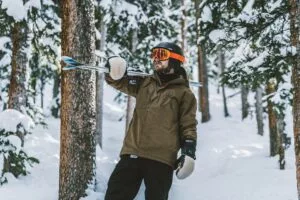
The Best Ski Jackets and Shells in Canada
Stay warm and dry on the hill with the best ski jackets and ski shells.
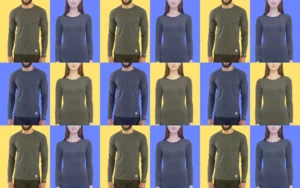
The Best Thermal Shirts in Canada
A thermal shirt is one of the bests ways to stay warm during the cold weather.
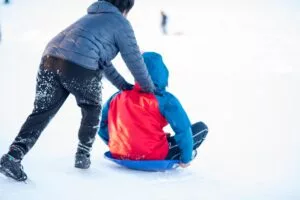
The Best Sleds In Canada This Winter
Have fun and safe ride down snowy slopes with best tubes, toboggans, and other types of sleds.

The Best Ski Socks for Canadians
Frostbite? Not Cool. Protect your feet from the harsh mountain winter with this selection of ski socks, so you can go back to shredding snow.
